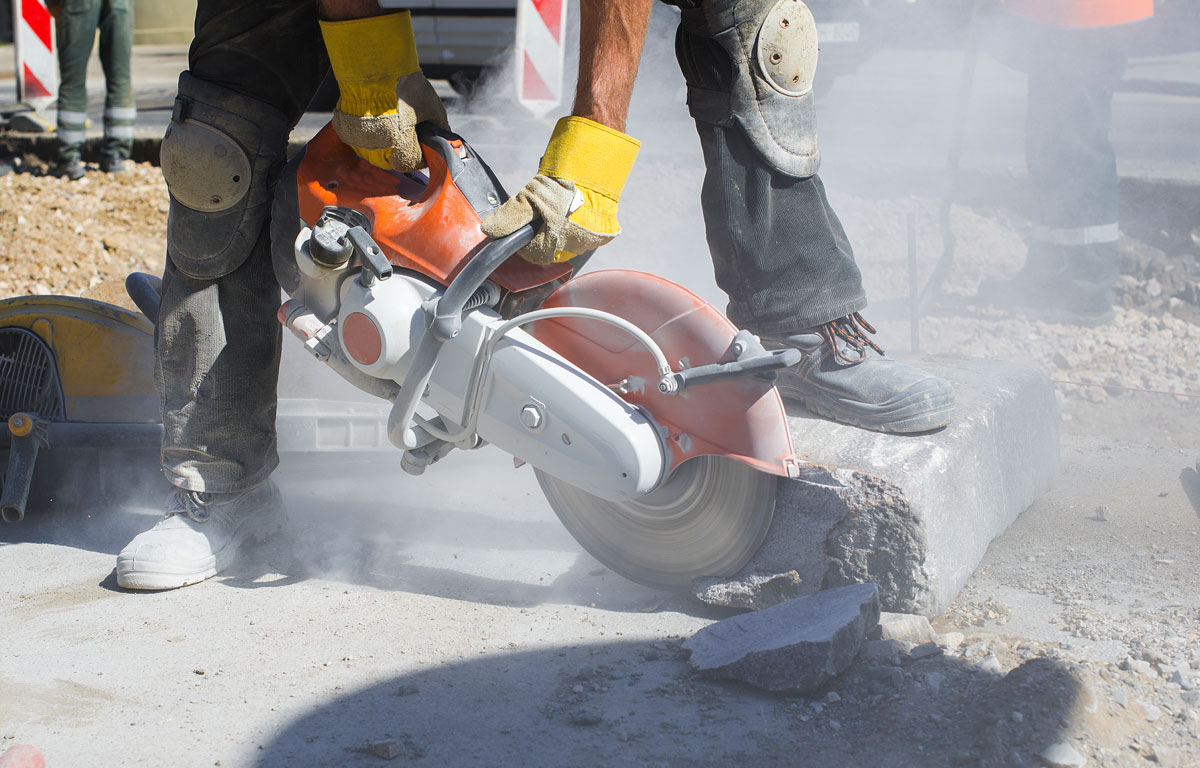SR Epoxy Sealer
Long Term Immersion (LTI): the coating will be immersed in the solution for extended periods of time.
Short Term Immersion (STI): the coating will be immersed for up to 72 hours.
Splash Zone (SZ): the coating will be exposed to the solution for only short periods of time before cleaning.
Rating:
R = Recommended for use.
N = Not recommended for use.
| Application | LTI | STI | SZ |
|---|---|---|---|
| Xylene | N | R | R |
| Toluene | N | R | R |
| 1,1,1-Trichloroethane | N | R | R |
| Gasohol | N | N | R |
| M.E.K. | N | N | N |
| Polysolve EM | N | N | R |
| Skydrol | R | R | R |
| Water | R | R | R |
| 5% Detergent | R | R | R |
| 10% NaOH | R | R | R |
| 50% NaOH | R | R | R |
| 10% Sulfuric | N | R | R |
| 70% Sulfuric | N | R | R |
| 10% Hcl | R | R | R |
| 10% Nitric | N | N | R |
| 10% Acetic | N | R | R |
| Ca Hypochlorite | R | R | R |
These recommendations are based on normal ambient temperatures of 65° – 85° F.
Novolac Polymer Concrete
Use this information to help determine the suitability of Novolac Polymer Concrete in different chemical environments. The information here was determined through immersion testing for a minimum of 90 days. In many cases, the tests continued for 200 days and at temperatures up to 150 degrees F.
The following numerical system is used to rate resistance to each listed chemical:
1 = Excellent
2 = Good
3 = Fair
4 = Occasional Spills
5 = Not Recommended
| Product | Rating | Product | Rating |
|---|---|---|---|
| Acetic Acid 5% | 2 | Benzoic Acid | 1 |
| Acetic Acid 10% | 3 | Benzene | 4 |
| Acetic Acid, Glacial | 4 | Boric Acid 30% | 1 |
| Acetone | 4 | Butyl Acetate | 2 |
| Acrylonitrile | 4 | Butyl Lactate | 2 |
| Aluminum Chloride <50% | 1 | Butyric Acid 10% | 4 |
| Aluminum Chloride >50% | 1 | Bromine | 5 |
| Ammonium Hydroxide <20% | 1 | Calcium Chloride 50% | 1 |
| Ammonium Hydroxide >40% | 2 | Calcium Hydroxide Sat. | 1 |
| Ammonium Nitrate Sat. | 1 | Ca Hypochlorite <15% | 2 |
| Ammonium Persulfate | 1 | Carbon Disulfide | 5 |
| Ammonium Sulfate Sat | 1 | Carbon Tetrachloride | 1 |
| Aniline | 4 | Chlorobenzene | 1 |
| Alcohol, Methyl | 4 | Chloroform | 5 |
| Alcohol, Isoproply | 2 | Chromic Acid 10% | 1 |
| Amyl Acetate | 1 | Chromic Acid 20% | 3 |
| Beer | 1 | Citric Acid 50% | 2 |
| Copper Flueroborate | 1 | Methylene Chloride | 5 |
| Corn Oil | 1 | Monochloro Acetic 5% | 1 |
| Cyclohexane | 1 | Monochloro Acetic 10% | 3 |
| Cyclohexanol | 1 | Milk | 1 |
| Cyclohexanone | 4 | Mineral Spirits | 1 |
| Diacetone Alcohol | 1 | Mustard | 1 |
| Diethyl Phthalate | 1 | Naptha | 1 |
| Diglycolic Acid | 1 | Napthalene | 1 |
| Dimethyl Phthalate | 1 | Nitric Acid 10% | 1 |
| Ethyl Acetate | 3 | Nitric Acid 20% | 2 |
| Ethyleneglycol | 1 | Nitric Acid 30% | 3 |
| Ether | 3 | Nitric Acid >40% | 4 |
| Ethylene Dichloride | 5 | Oils-Cutting | 1 |
| Fatty Acid | 1 | Oils-Mineral | 1 |
| Ferric Chloride | 2 | Oils-Vegetable | 1 |
| Ferrousulfate | 2 | Oleic Acide | 1 |
| Formaldehyde | 1 | Oxalic Acide | 1 |
| Formic Acid <10% | 3 | Peanut Butter | 1 |
| Formic Acid >10% | 4 | Perchloroethylene | 3 |
| Fluoboric Acid | 1 | Phenol 5% | 5 |
| Gasoline | 1 | Phosphoric Acid <50% | 2 |
| Glycerine | 1 | Phosphoric Acid 70% | 4 |
| Glyoxal | 1 | Phosphoric Acid Con | 5 |
| Hydrochloric Acid 15% | 1 | Phthalic Acid | 4 |
| Hydrochloric Acid 37% | 2 | Potassium Hydroxide<40% | 1 |
| Hydro Fluric Acid 5% | 2 | Pyridine | 5 |
| Hydro Fluric Acid 15% | 3 | Sodium Benzoate | 1 |
| Hydrogen Peroxide 10% | 4 | Sodium Bicarbonate Sat. | 1 |
| Hypochlorous Acid 5% | 1 | Sodium Bisulfate Sat. | 1 |
| JP5 Jet Fuel | 1 | Sodium Bisulfite Sat. | 1 |
| Juices, Fruit | 1 | Sodium Carbonate Sat. | 1 |
| Juices, Vegetable | 1 | Sodium Chloride Sat. | 1 |
| Kerosene | 1 | Glutamate | 1 |
| Lactic Acid <20% | 2 | Sodium Hydroxide 50% | 1 |
| Lactic Acid 25% | 4 | Sodium Hypochlorite 10% | 2 |
| Lanoline | 1 | Sodium Propionate | 1 |
| Lard | 1 | Sodium Sulfate Sat. | 1 |
| Linseed Oil | 1 | Sodium Sulfide Sat. | 1 |
| Maleic Acid 30% | 1 | Skydrol | 1 |
| Maleic Acid 60% | 3 | Sucrose Sol. Sat. | 1 |
| Malic 50% | 1 | Succinic Acid | 1 |
| Mayonnaise | 1 | Sulfuric Acid 20% | 1 |
| Methylethyl Ketone | 5 | Sulfuric Acid 50% | 2 |
| Methylisobutyl Ketone | 5 | Sulfuric Acid 70% | 2 |
| Methyl Salicylate 50% | 5 | Sulfuric Acid 98% | 1 |
| Tannic Acid Sat. | 1 | Trisodium Phosphate | 1 |
| Tatraric Acid Sat. | 1 | Urea | 1 |
| Toluene | 4 | Vinegar | 2 |
| Triacetin | 1 | Water | 1 |
| Trichloroethane | 2 | Wine | 1 |
| Trichloroethylene | 4 | Xylene | 2 |
| Triethanolamine | 1 | Zinc Nitrate | 1 |
| Triethylene Glycol | 1 |
CAUTION: The technical data furnished here is true and accurate to the best of our knowledge, however, no guarantee of accuracy is given or implied as it applies to actual plant conditions. These conditions vary to such a degree that the results in actual field applications may be different than those obtained through laboratory testing. These tests cannot duplicate actual plant conditions where abrasion, chemical combinations and housekeeping procedures may have major effects on the life of a flooring systems. A test patch is always the best guide to selecting a system for any particular environment.




Share this: